Finding the right tool to manage employee schedules can be a never-ending challenge, especially when you're looking for open-source options that are both cost-effective and flexible.
As we head into 2025, more businesses are turning to open-source software to streamline scheduling and take back control of their workforce management.
If you're tired of juggling spreadsheets or dealing with clunky, expensive tools, this post is for you.
We’ve rounded up some of the top open-source employee scheduling software out there, helping you find the best fit to simplify scheduling, boost team productivity, and save valuable time.
What is Open Source Employee Scheduling Software?

Open-source employee scheduling software is a type of workforce management tool designed to help businesses plan, organize, and track employee work hours and shift schedules, while offering the freedom to fully customize the software to suit their specific needs.
What sets open-source solutions apart is that their source code is publicly available. Any developer or organization can access the backend, make adjustments, add features, or integrate it with other tools.
Unlike proprietary software, which often comes with limitations and subscription fees, open-source scheduling platforms are usually free to use and highly adaptable.
These tools can support a wide range of functions, such as:
- Assigning shifts based on employee availability
- Avoiding scheduling conflicts
- Managing time-off requests
- Tracking labor costs
- Sending real-time notifications to team members
This flexibility can be a game-changer for tech-savvy businesses or companies with development resources. You’re not locked into a one-size-fits-all model; instead, you can tweak the platform to fit how your team works.
In short, open-source employee scheduling software puts the power back in your hands. Whether you're running a small café or managing multiple teams across different time zones, these tools help you streamline scheduling with total control and transparency.
Now that we’ve covered the basics, let’s explore some of the best open-source scheduling software options available today.
Overview of the 10 Best Open-Source Employee Scheduling Software
Below is a curated roundup of the top open-source employee scheduling tools available in 2025.
1. Schedulix – Best for IT Scheduling Workflows
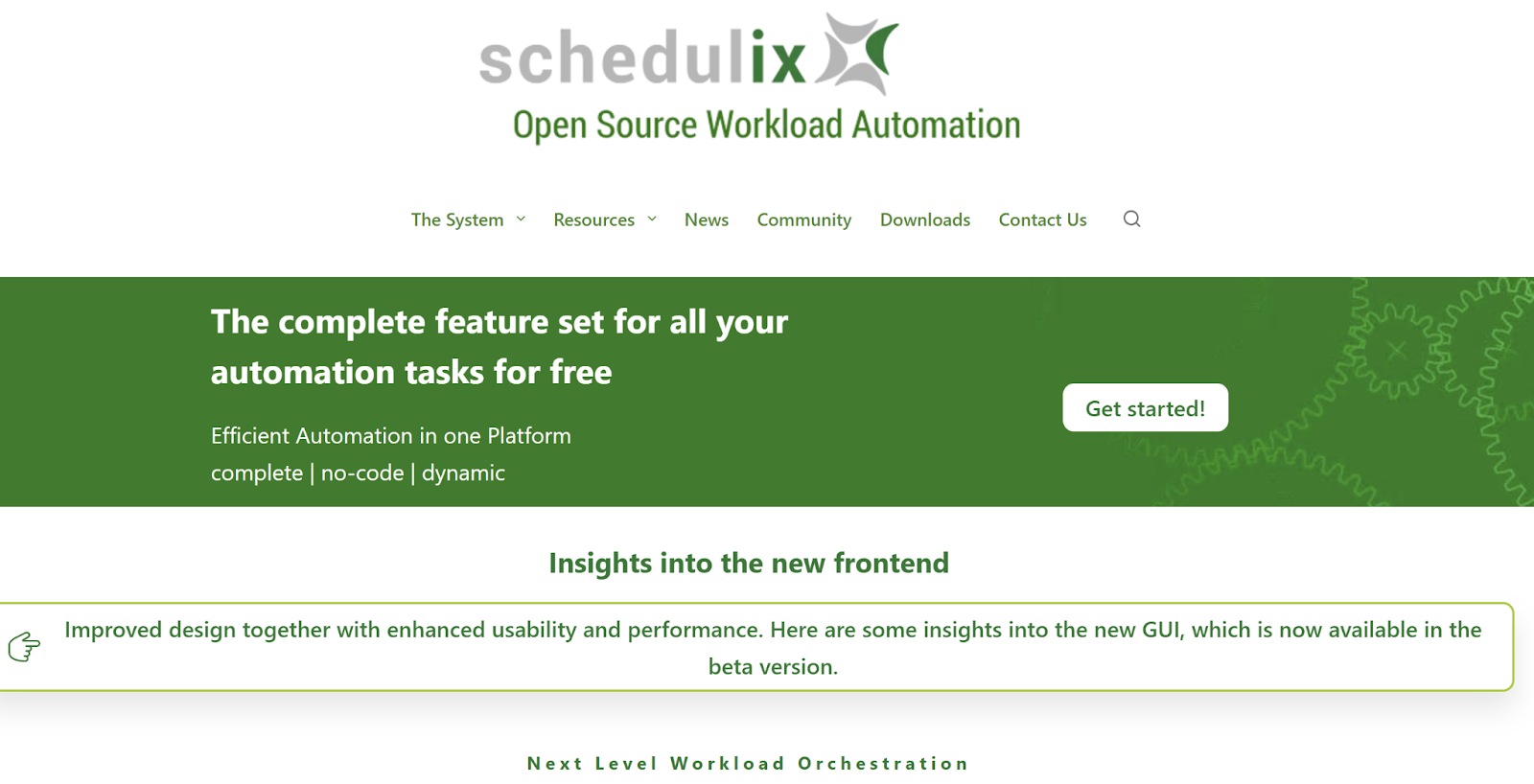
Schedulix is an open-source job scheduling and workload automation platform designed for complex IT and enterprise operations. Originally built to manage large-scale system processes, it supports hierarchical workflows, dynamic scheduling, and real-time adjustments, making it ideal for organizations with intricate, interdependent tasks. Its architecture allows for secure automation across distributed systems, with extensive monitoring and control features.
Key Features:
- Hierarchical workflow modeling for breaking down large jobs into reusable sub-workflows.
- Dynamic scheduling that executes tasks as soon as dependencies and resources allow.
- Comprehensive monitoring with real-time alerts and detailed execution logs.
- Secure management with user authentication, encrypted communications, and API access.
Limitations:
- No preemptive scheduling, tasks run to completion without interruption.
- Setup and configuration can be technically complex for beginners.
- User interface is functional but lacks the polish of modern SaaS scheduling platforms.
Pricing:
2. evQueue – Best for Event-Driven Scheduling
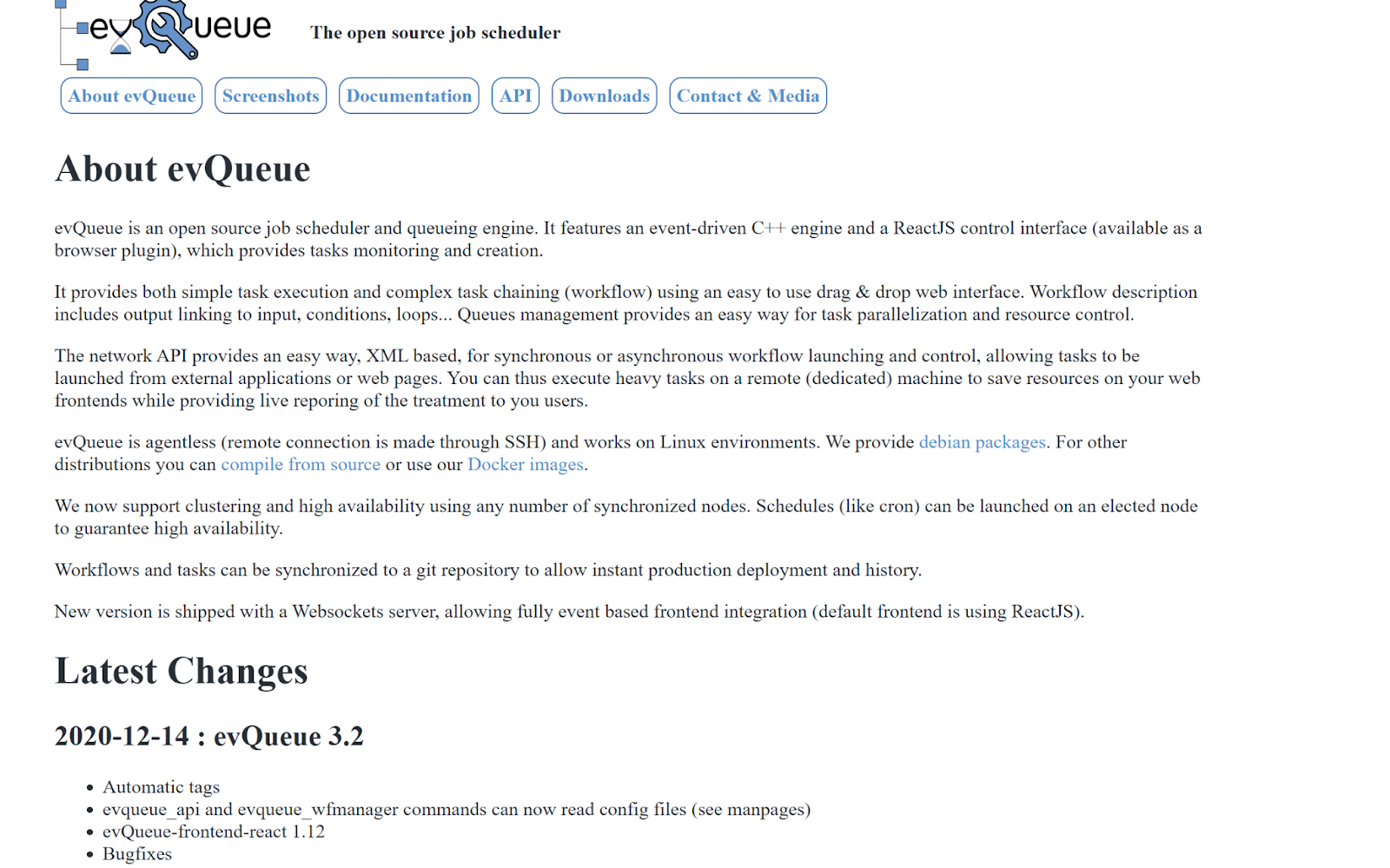
evQueue is an open-source job scheduler designed for workflows triggered by specific events, making it ideal for dynamic environments where schedules change frequently. Built on a ReactJS-based drag-and-drop interface, it combines ease of use with advanced filtering and execution controls. Its event-driven architecture supports complex dependency management, ensuring that tasks run precisely when needed without manual intervention.
Key Features:
- Event-driven scheduling that launches jobs automatically in response to system or user-defined triggers.
- Visual drag-and-drop workflow builder for quick setup and modification.
- Granular filtering and job control options for fine-tuned execution.
- Native support for high-availability clustering and distributed execution.
Limitations:
- Smaller community compared to more established schedulers, which can impact support availability.
- Requires manual configuration for integration with some third-party systems.
- Lacks built-in reporting tools so that analytics may require external solutions.
Pricing:
3. ServiceMax – Best for Field Teams
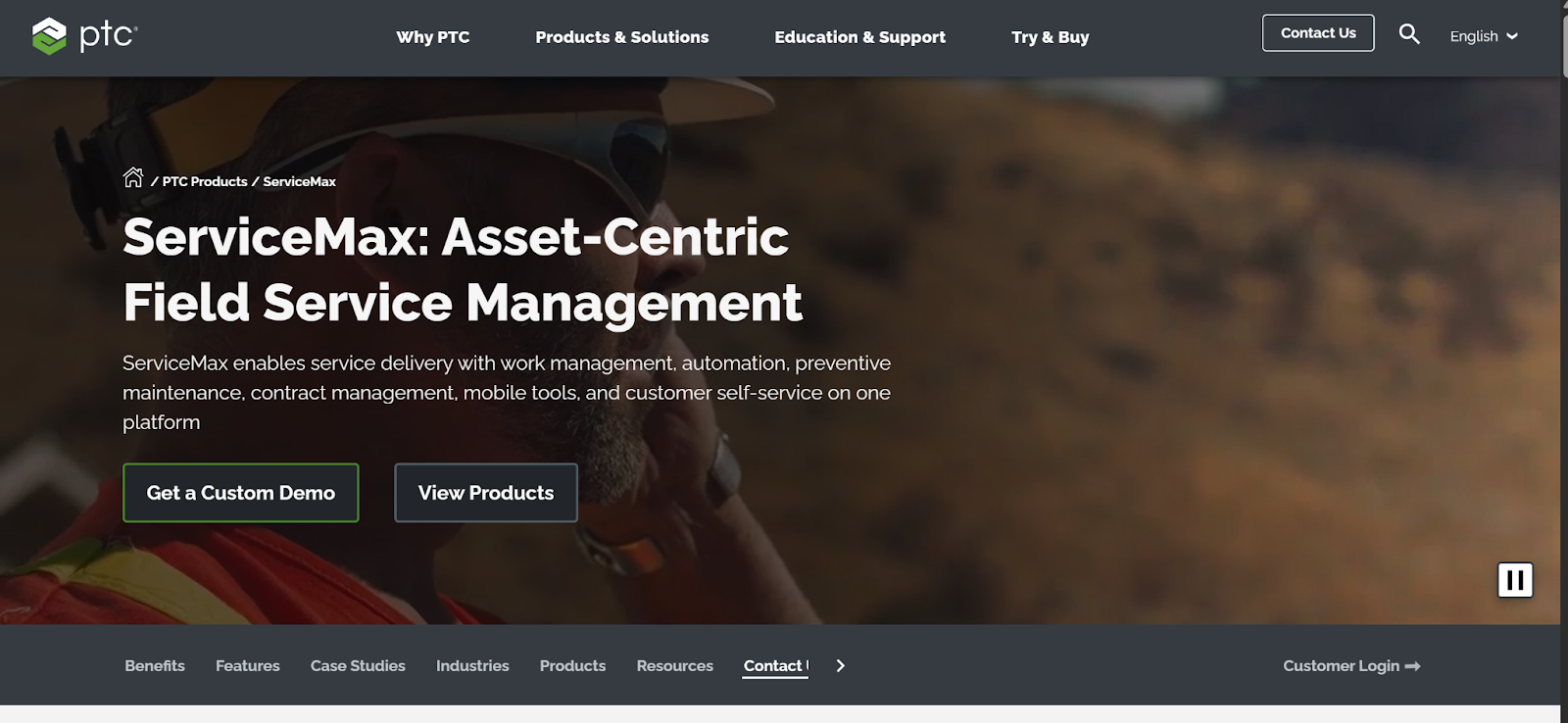
ServiceMax is a comprehensive field service management platform designed for organizations with mobile technicians and on-site teams. It combines intelligent job dispatching with real-time updates, allowing managers to optimize schedules while ensuring technicians have all the information they need on the go. With its mobile-first design, ServiceMax streamlines scheduling, enhances communication, and improves overall operational visibility.
Key Features:
- Intelligent dispatching that matches jobs to the most suitable technician based on location, skills, and availability.
- Real-time job updates and status tracking for improved transparency.
- Mobile app enabling technicians to access work orders, update job progress, and capture customer signatures on-site.
- Integration with CRM and ERP systems for seamless data sharing across departments.
- Reporting and analytics tools to monitor performance and identify optimization opportunities.
Limitations:
- Pricing can be higher than other scheduling tools, making it less suitable for small businesses.
- Initial setup and customization may require dedicated IT resources.
- Some advanced features have a learning curve for new users.
Pricing:
4. StaffRoster Suite – Best for Large, Multi-Site Operations
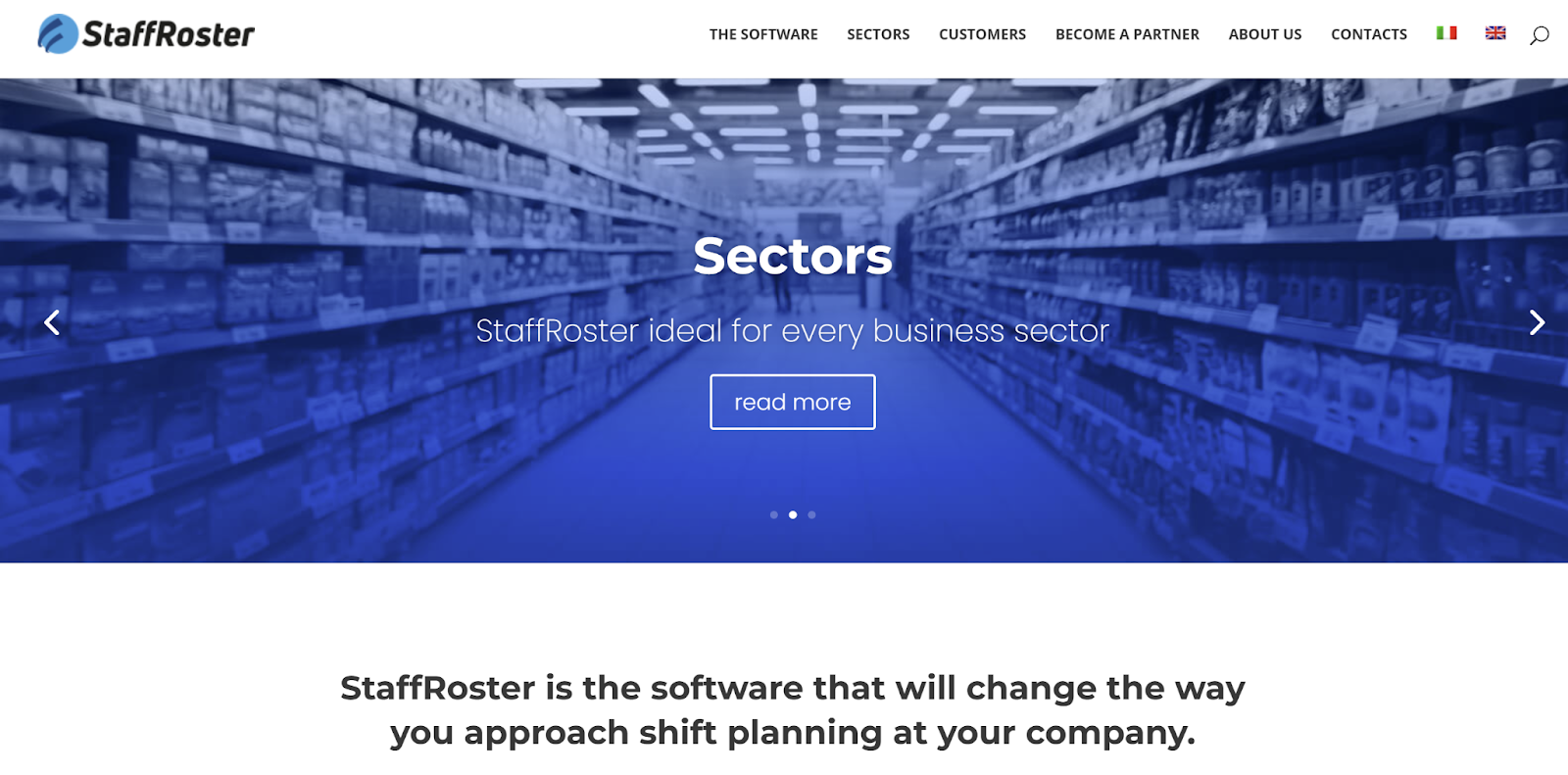
StaffRoster Suite is a comprehensive shift-scheduling platform built for larger organizations with complex, multi-location needs. It centralizes roster planning across sites, enforces contract and labor constraints, and streamlines manager–staff communication, making it a strong fit for enterprises operating several stores or facilities.
Key Features:
- Multi-location scheduling with centralized control (manage up to multiple stores/locations from one place).
- Constraint-aware auto-scheduling that considers contract types, availability, and demand/turnover targets to generate optimized rosters.
- Real-time adjustment handling for absences and demand spikes; recalculates activities on the fly.
Mobile/web access for managers and staff (planning, edits, and on-the-go updates).
Limitations:
- No widely advertised free trial; pricing starts at the mid-enterprise tier.
- Smaller public ecosystem and fewer third-party reviews versus marquee SaaS competitors, which may affect community support.
- Advanced configuration can require time to tailor for complex rules.
Pricing:
5. Auto Shift Planner – Best for Automated Shift Creation
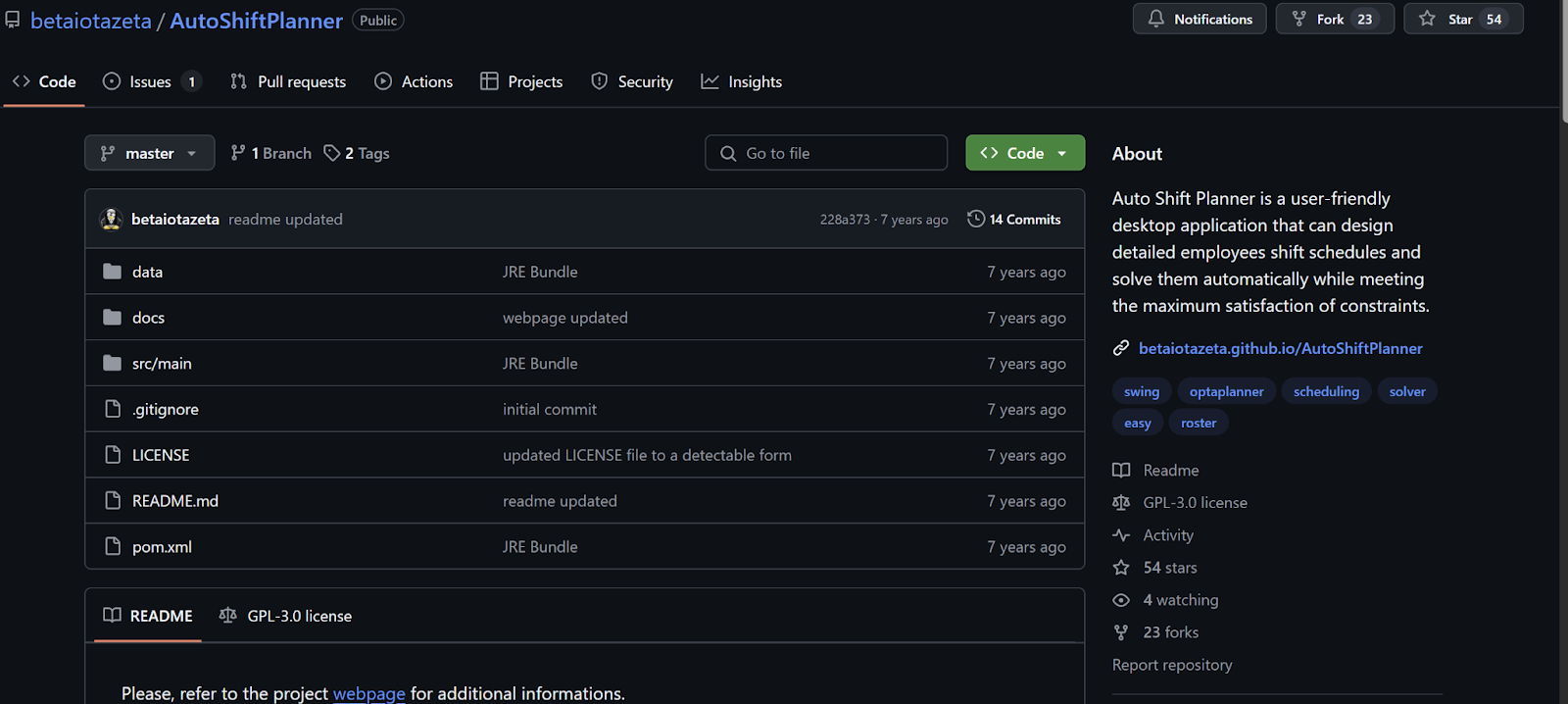
Auto Shift Planner is a user-friendly scheduling tool aimed at generating optimized shift rosters automatically. Powered by heuristic and meta-heuristic algorithms, it intelligently balances employee working hours, preferences, and mandatory breaks while respecting detailed constraints. It’s particularly valuable for managers organizing complex or continuous-shift environments, such as healthcare or retail operations.
Key Features:
- Automated Schedule Generation: Define availability, shift requirements, opening hours, desired break durations, and constraints, then generate a schedule instantly.
- Fine-Grained Time Blocks: Schedules can operate using half-hour units instead of broad “morning/evening” blocks, allowing precise coverage modeling.
- Heavy Constraint Handling: Supports rules like required weekly hours, consecutive shift limits, minimum overnight rest, shift overlap prevention, and staffing thresholds.
- Cross-Platform & Portable: Runs without installation across Linux, macOS, and Windows.
- OptaPlanner-Based Engine: Leverages OptaPlanner for scalable optimization under complex constraints.
Limitations:
- Solver Speed: Optimization may be slow in highly constrained or large schedules; restarting the solver can help.
- Setup Required: Being a standalone open-source app, initial configuration and integration (e.g., with your environment) may require technical effort.
- Basic UI: While functional and intuitive, the interface is not as polished as modern SaaS tools.
Pricing:
9. monday.com – Best for Custom Workflows
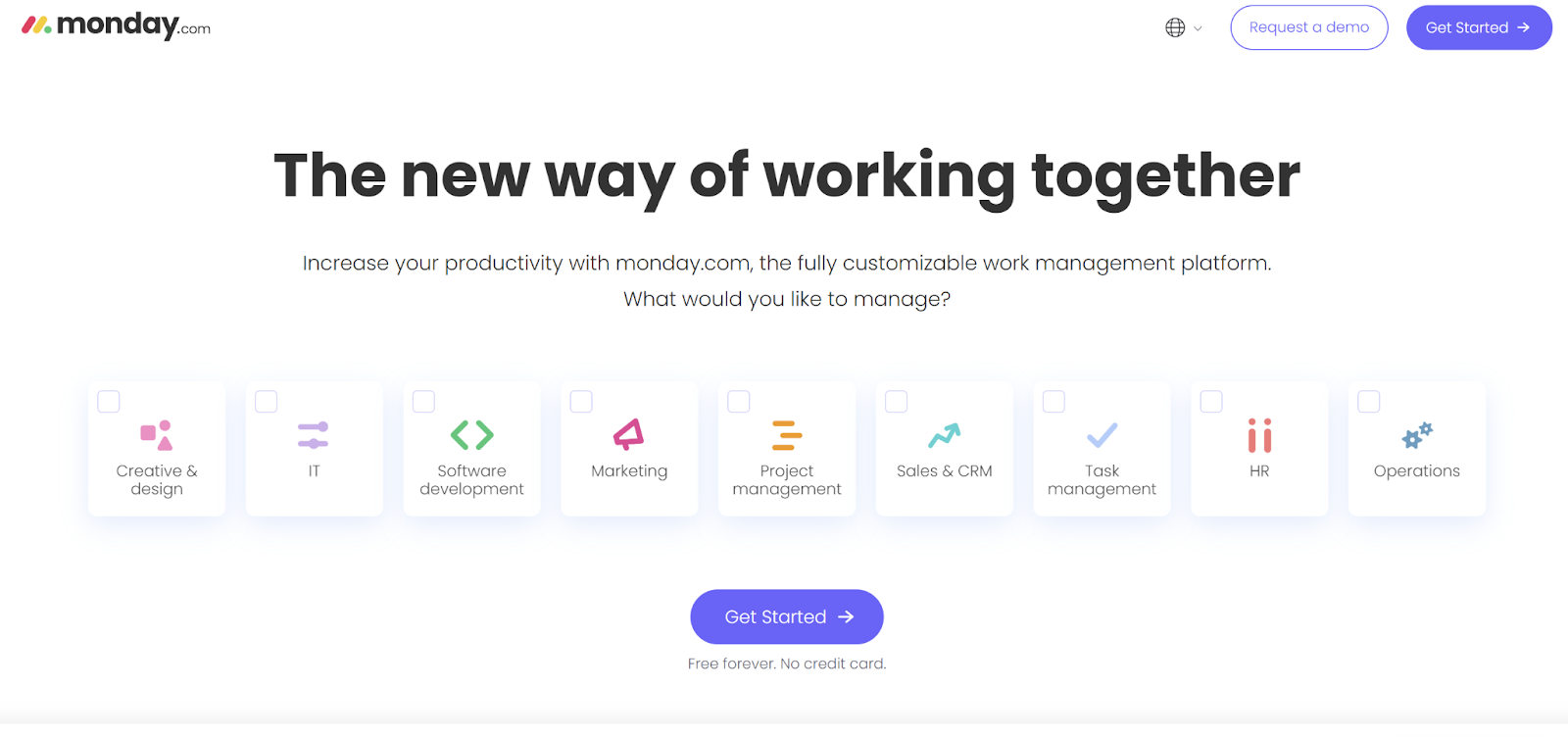
monday.com is a versatile work management platform with robust customization capabilities, making it well-suited for teams that need tailored scheduling workflows. While not open-source, its Developer tools let you build or integrate custom apps for shift planning.
The platform’s visual dashboards, automation features, and pre-built templates make it easy to design, share, and adjust weekly or rotating schedules. It also integrates seamlessly with Google Calendar, Slack, Excel, and other popular tools.
Key Features:
- Highly customizable boards for creating any scheduling structure you need.
- Automation rules to assign shifts, send reminders, and flag conflicts.
- Pre-built templates for weekly, monthly, or rotating shifts.
- Integrations with Google Calendar, Slack, Excel, Outlook, and more.
- Visual dashboards for tracking team availability and workload.
Limitations:
- Not open-source; customization beyond templates often requires higher-tier plans or developer involvement.
- Some advanced automations and integrations are only available on premium tiers.
Pricing:
Ratings:
G2: 4.7/5
Capterra: 4.6/5
10. TimeTrex – Best for Flexible Scheduling Needs
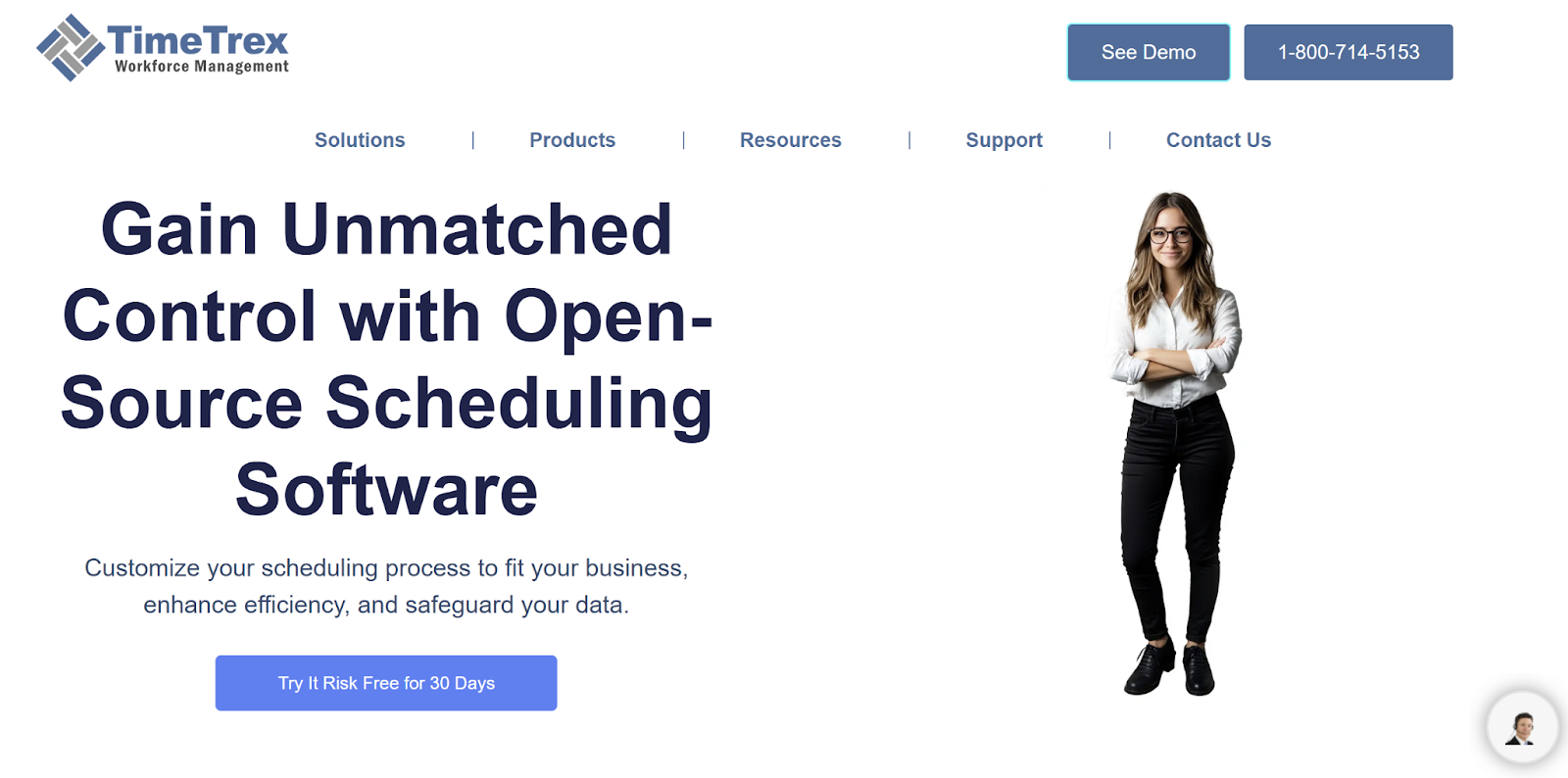
TimeTrex is a comprehensive workforce management platform with an open-source Community Edition that includes time tracking, payroll, and advanced shift scheduling. It’s designed to handle both unique and recurring schedules while managing time-off requests and maintaining labor law compliance. Suitable for small businesses through to larger organizations, TimeTrex offers a centralized solution for managing attendance and workforce data.
Key Features:
- Open-source Community Edition with no license fees.
- Advanced scheduling for both one-off and recurring shifts.
- Time-off and leave management with approval workflows.
- Payroll integration for seamless wage calculation.
- Compliance tools to meet labor regulations.
Limitations:
- Interface can feel dated compared to newer SaaS tools.
- Setup and customization may require technical knowledge for the Community Edition.
Pricing:
Ratings:
G2: 4.0/5
Capterra: 4.4/5
With so many great tools to choose from, how do you know which one is right for your business? In the next section, let’s look at some important factors to keep in mind when evaluating your options.
How to Choose the Best Employee Scheduling Software
Finding the right employee scheduling software depends on your business size, workflow complexity, and team needs. Here are the key factors to consider when making your choice:
1. Understand Your Business Needs
Start by identifying what you want the software to do, automate shift creation, handle time-off requests, manage multi-location staff, or sync with payroll systems.
2. Check for Core Scheduling Features
Look for essential tools like:
- Drag-and-drop shift planning
- Employee availability tracking
- Overtime alerts and labor compliance features
- Recurring and rotating shift capabilities: These features save time and reduce manual errors in managing your workforce.
3. Ease of Use and Interface Design
A cluttered or confusing interface can reduce team adoption. Choose a tool with a clean dashboard, simple navigation, and a quick learning curve, even for non-technical managers or employees.
4. Integration with Other Systems
Make sure the software integrates with your existing tools, like payroll systems, calendars, HR platforms, or communication apps. This ensures your data flows seamlessly across platforms.
5. Scalability and Flexibility
Pick a solution that can grow with your business. Whether you’re managing a team of 10 or 1,000, the software should be able to handle increasing complexity, like additional locations, departments, or user roles.
6. Mobile Access
Mobile apps or responsive web access are critical for businesses with remote, field, or frontline staff. Employees should be able to check schedules, clock in/out, or request time off from their phones.
7. Cost and Licensing Model
Open-source tools often have free versions, but some offer premium features under a paid plan. Evaluate both up-front and long-term costs, and consider whether you need cloud hosting, support services, or training.
8. Community Support or Vendor Assistance
With open-source software, active community forums, regular updates, and documentation are essential. If you’re opting for a paid tier, check for customer support responsiveness, onboarding assistance, and SLAS.
In the next section, we’ll explore how Clockwise can enhance productivity through intelligent scheduling.
Read: The remote employee onboarding template you need
How Clockwise Can Help

Clockwise is a smart scheduling tool designed to optimize team productivity by creating more focus time and reducing scheduling conflicts. While it's not a traditional employee shift scheduler, it brings immense value to businesses that manage knowledge workers, hybrid teams, and cross-functional calendars.
Key Benefits of Using Clockwise:
- AI Scheduling: Automatically organizes your calendar to protect focus time, cluster meetings, and eliminate wasted gaps.
- Smart Integrations: Seamlessly connects with Google Calendar, Slack, and other workplace tools to streamline scheduling without manual effort.
- Team Coordination at Scale: Helps entire teams align their schedules for collaborative work while balancing individual productivity needs.
- Focus Time Protection: Blocks uninterrupted time for deep work by intelligently moving flexible meetings.
- Analytics and Insights: Offers reports on how much focus time your team gets each week and where improvements can be made.
If your business revolves around digital collaboration and calendar management, Clockwise is ideal for boosting efficiency and reducing meeting fatigue.
Wrapping Up
Open-source scheduling software empowers businesses to efficiently manage shifts, time-off requests, and team coordination, without hefty subscription fees or being tied to a single vendor. With a variety of flexible, customizable tools available, it’s easier than ever to find a platform that fits your unique workflows and scales with your needs. Start exploring the right tool for your business to schedule smarter, work better, and reclaim valuable time.


.gif)
.png)


